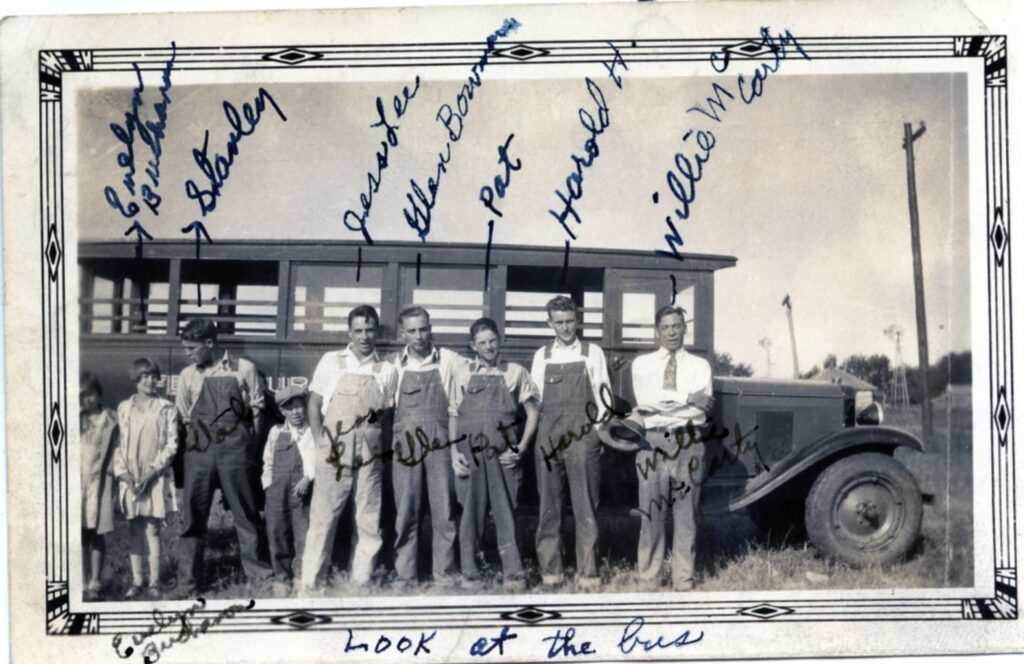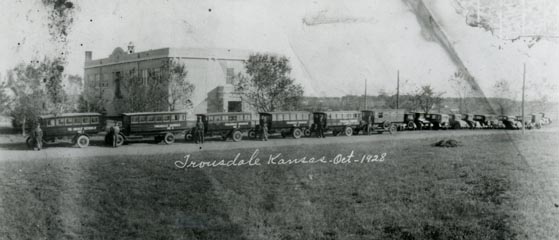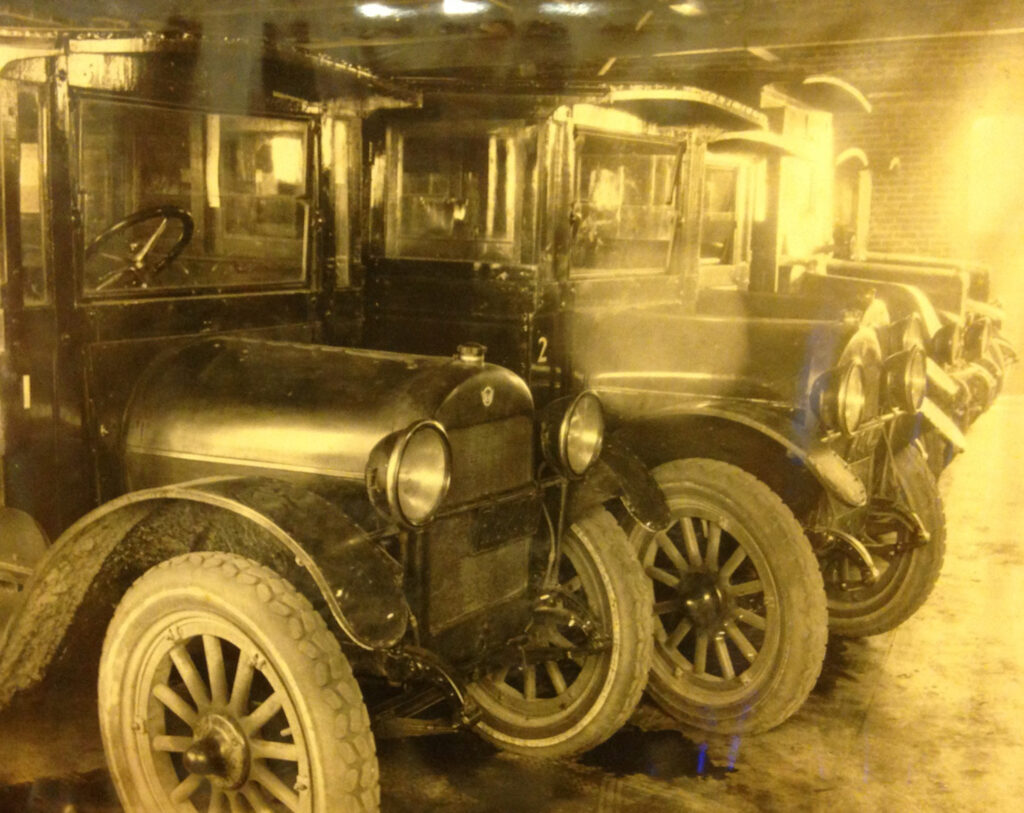Last week I wrote about walking or riding a horse, bike, or the Doodlebug to school. When Lucinda Bidleman read that article, it brought back a memory she had of riding the Doodlebug in the early sixties. “I was a small child at the time. The driver/engineer took me up front to try to show me the jack rabbits jumping out of the way as illuminated by the headlamp after dark.”

I want to mention that if these articles bring back memories for you, be sure to let me know and I’ll add your stories and pictures to our files.
This week, I have some stories about riding the bus to school. In one of our online oral histories, Bill Olsen said he was in junior high school when he started driving the bus to Nettleton School. “I drove a pretty good-sized bus at the time. In fact, I got a chauffeur’s license.”
One man objected to him driving the bus, but he said he didn’t have any problems “because I felt like I had responsibility, and I never acted like Jughead driving the school bus. The only thing that bothered me about driving the school bus, was when we’d go to a football game, that was my bus. I said, ‘What about somebody else?’ They said, ‘That’s your bus, you’re going to drive it.’ I didn’t like that because most of the kids I hauled were my age. It was kind of a responsibility I didn’t want.”
Betty Lund, who would later become his wife, rode on his bus to school. “We never were sweethearts till we got out of school. I did flirt a little on the bus. I had that big mirror up there, and when driving the bus, I’d wink at her.”
After Bill graduated in 1949, students were no longer allowed to drive the bus.

Arnita Schultz of Trousdale shared a story Shirley Gales Stein wrote down for her of a gruesome event that happened in the late 1930s on Mr. Keene’s bus route.
“The bus was fully loaded and we were traveling north of Trousdale to the Bill Mead home when a young steer was along the side of the road. Mr. Keene slowed the bus, and the steer just ran along the side of the bus. Suddenly, Ka-whoomp! The bus tilted, almost turning over as the first tire ran over the steer. Then Ka-whoomp! Tilting the bus precariously again, as the back dual tires ran over the steer. Of course, all the students were excited after two jolts of the bus. Mr. Keene stopped and cut the throat of the steer, traveled on to Meads and told them about the incident so they could butcher the steer.”
Shirley continued, “Another time (c. 1937) we were traveling west on the road one-mile north of the Emmet English place with Mr. Southards as our driver. We had a heavy snowfall the day before so the road was partially drifted with snow. Mr. Southards tried to go through the road as we were the next ones on the route. The bus couldn’t negotiate the drifts and we slid off into the ditch. It was cold and we waited, hoping that someone would come along or be concerned and look for the bus.
“It was beginning to become dark and since the driver could not leave the bus with several students on it, he asked my brother, Harold (11 years old) to walk the mile across the field to the Emmett English home to tell him our situation and to bring a tractor to pull us out. He loaned my brother his overshoes, and I remember watching Harold wading through the deep snow. I was so worried about him as a mile in the deep drifts was difficult. Mr. English did come and pulled us out and we arrived home about 7 p.m. We were cold and hungry, but relieved to get home safely.”

Another story about marooned children is told by Eva Gifford (1893-1974) in the Kinsley-Edwards County Centennial book. “Homer Wilson was the bus river, and got them almost to the Meireis home, which was on the Edwards county and Kiowa county line, before the bus stalled. There were around 14 extra mouths for the Meireis family to feed that night plus their own family of seven. They were fed a supper of beans, biscuits, and canned sand hill plums. There were too many to sleep crosswise in the beds so the mattresses were laid together in each bedroom to make room for everyone. No one could turn over in bed because they were so crowded, but at least the ones in the middle certainly kept warm!”
This year is already creating stories to tell future grandchildren about 2020 pandemic and the disrupted graduation, cancellation of sports and wearing masks in school. I hope everyone is taking a minute to write down events and feelings about this time because it will make interesting history for future generations. I will soon be asking for your reflections for our files.
